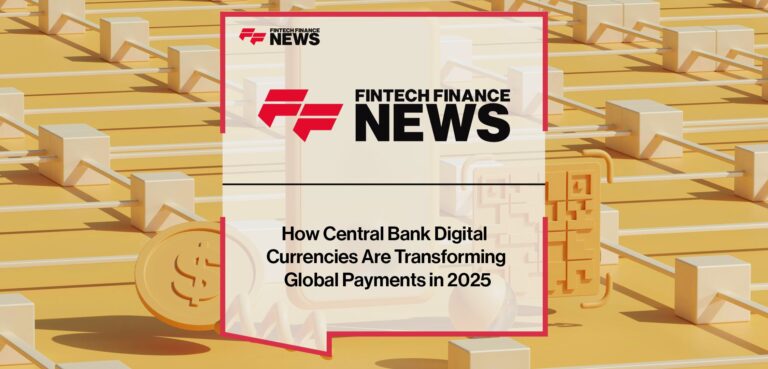The way we move money is changing. And while we often think of central banks as slow-moving and traditional, when it comes to the future of money, they’re not standing back.
Central Bank Digital Currencies (CBDCs) have moved from experimental projects to active pilots and rollouts in several regions. What started as a cautious exploration has now become a serious push to redefine how we transact, both domestically and across borders.
So what exactly are CBDCs? And more importantly, how are they reshaping global payments?
What Is a Central Bank Digital Currency?
A CBDC is a digital form of a country’s fiat currency, which the central bank issues and controls. Unlike cryptocurrencies, which are decentralised, a CBDC is centralised and operates within the existing financial system, just in digital format.
There are two main types of CBDCs being explored.
Retail CBDCs for the general public to use in everyday payments, like digital cash.
Wholesale CBDCs that are used by financial institutions for interbank transfers and settlement.
The end goal isn’t to replace physical cash overnight but to modernise and streamline the way money moves, while retaining full government oversight.
Why Are Central Banks Moving So Quickly?
There’s no single reason; it’s more like a combination of pressures coming to a head, such as:
Declining use of physical cash
Digital payments have already taken over in many countries. Central banks want to ensure they stay relevant in that shift.
Rise of private digital currencies
Stablecoins and cryptocurrencies are growing rapidly. CBDCs give central banks a way to offer a regulated alternative.
Geopolitical and economic strategy
Some countries see CBDCs as a tool to strengthen monetary sovereignty, reduce reliance on the US dollar, or even reshape cross-border trade dynamics.
Need for faster, cheaper payments
Traditional banking systems can be slow and expensive, especially for international transfers. CBDCs offer a faster, potentially lower-cost solution.
Global Progress: Who’s Leading the Way?
So far in 2025, a number of countries have already made significant progress.
China has expanded its digital yuan beyond pilot cities, with real-world usage growing in transport, retail, and government payments.
Europe is well into the development phase of the digital euro, with commercial banks beginning to test integrations.
Brazil, India, and Nigeria have launched CBDC initiatives aimed at improving financial inclusion and reducing the shadow economy.
The US remains cautious but continues researching a digital dollar, particularly in response to developments elsewhere.
How Will CBDCs Change Global Payments?
This is where things get interesting. CBDCs could impact payments in multiple ways.
1. Faster Cross-Border Transfers
Right now, international payments are slow, expensive, and routed through multiple intermediaries. CBDCs have the potential to cut out much of that complexity. If two central banks agree on a direct settlement channel, transfers between countries could be almost instant.
2. Reduced Fees and Friction
With fewer intermediaries, transaction fees could drop, especially for remittances and B2B payments. That’s good news for businesses operating across borders and consumers sending money home.
3. Increased Transparency and Traceability
CBDCs can be designed to include built-in compliance features. That means better oversight, easier enforcement of anti-money laundering rules, and faster fraud detection.
4. Potential Pressure on Banks
If individuals can hold money directly with central banks through a digital wallet, traditional banks might face competition for deposits. Some countries are exploring safeguards, like tiered interest rates or wallet limits, to avoid destabilising their banking systems.
5. Greater Access to Digital Finance
In countries where banking access is limited, CBDCs could help bring millions into the formal financial system. All that’s needed is a phone and a digital wallet, meaning no traditional bank account is required.
CBDCs vs Crypto
Let’s be clear, CBDCs are not cryptocurrencies. They may share the word “digital,” but that’s where the similarity ends.
Feature
CBDCs
Cryptocurrencies
Issued By
Central bank
Decentralised networks
Value Stability
Pegged to fiat (1:1)
Prone to market volatility
Legal Status
Legal tender
Varies by country
Privacy
Controlled and traceable
Pseudonymous (to varying degrees)
Purpose
Payments, financial stability
Investment, decentralisation, utility
What CBDCs do represent, however, is a response to crypto’s rise. And they’re likely to shape how the broader ecosystem evolves, including how platforms manage digital asset offerings and user experience.
That includes hybrid trading platforms that allow users to interact with both traditional fiat and digital assets. For example, a crypto trading environment that supports regulated tokens alongside more speculative coins will likely see continued growth as CBDCs gain traction.
Implications for Traders and Forex Markets
As more countries digitise their currencies, currency movements may become more closely linked to how efficient, accessible, and stable those systems are. And if CBDCs start to play a role in settling cross-border forex trades directly, that could influence demand dynamics and spreads.
Traders who use an online forex trading broker to operate across multiple currencies need to stay tuned to central bank developments. Not just to understand price movements but also to adjust to new settlement models, volatility patterns, and evolving regulatory requirements.
The Bottom Line
CBDCs won’t replace all other forms of payment overnight, but they’re not a niche idea anymore. They’re being tested, refined, and deployed, with the potential to make global payments faster, safer, and more inclusive.
